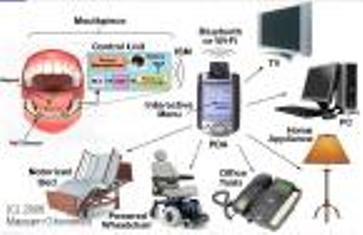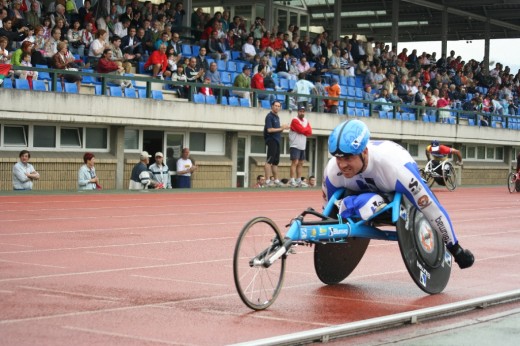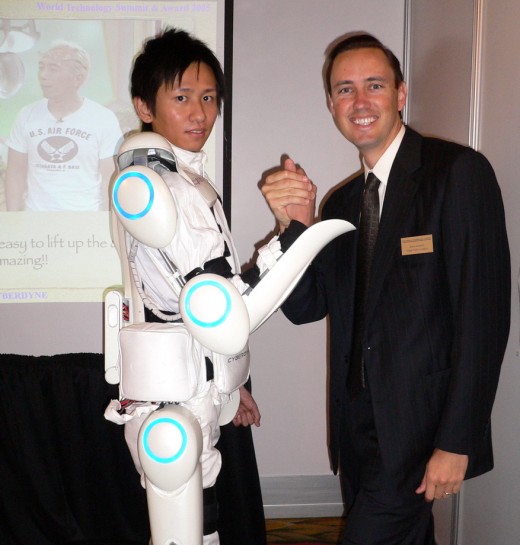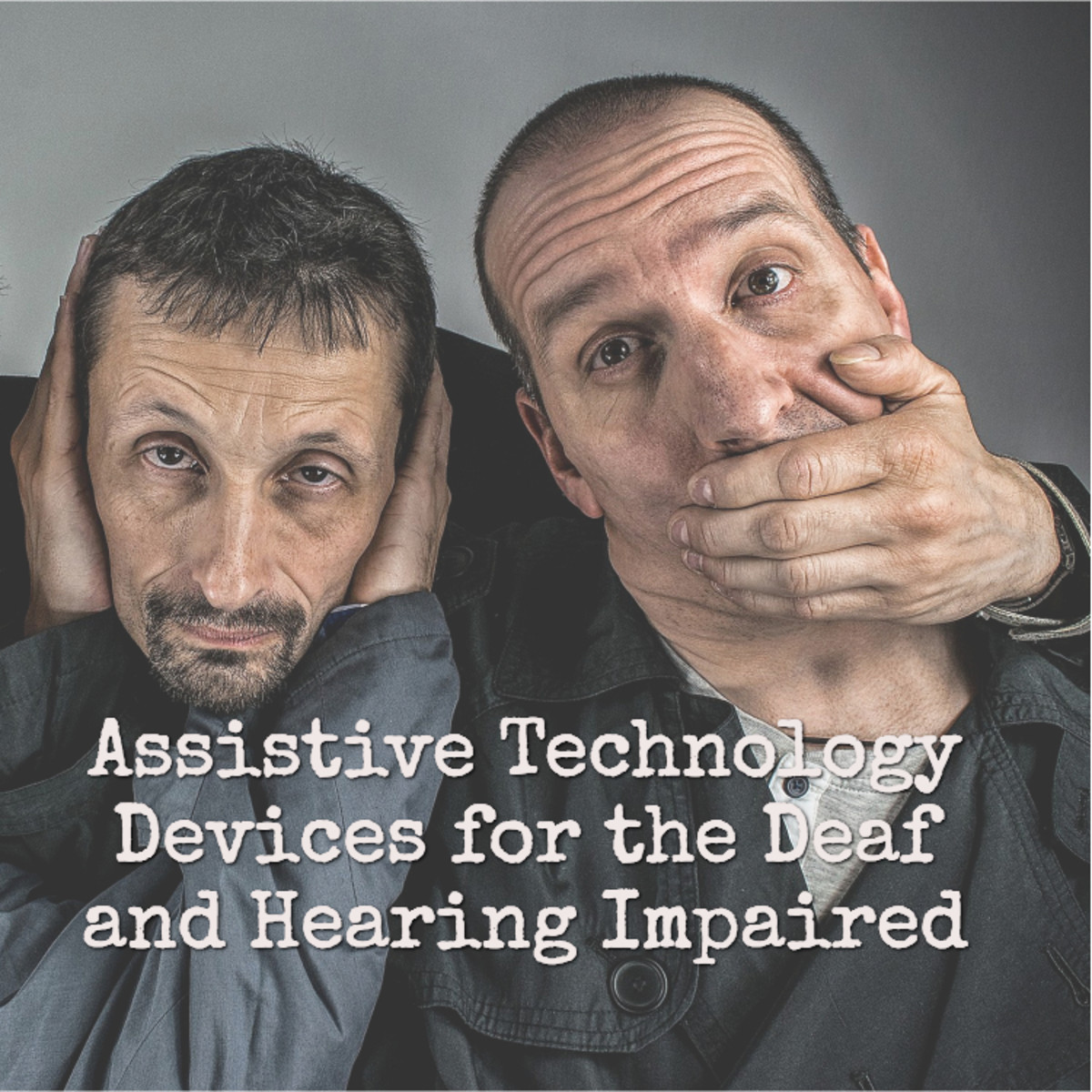Assistive Technology for the Disabled
Speak with anyone that is disable and you will find that there are obstacles that still hinder them from doing all the things they are capable of doing for themselves. Assistive Technology for the Disabled reveals some of the assistive technology that is available to smooth over some obstacles and allow the disable to have a better quality of life.
Unlike what some believe a disable person can
learn to become mobile, speak, write, and so much more when provided the right
tools that can enable them in doing so. Assistive technology is opening the doorway
for the disabled to do what their counterparts of years ago could not even
imagined could be done. Just as proper wheelchair access would enable the below individual to continue on his journey; the proper assistive technology allows other disabled individuals to become more interactive with their surrounding world.

Assistive Technology for People with Disabilities
Assistive Technology (AT) can be defined as a device or service that can benefit people with disabilities. Any piece of equipment, product system, or any device that can be used to improve, increase, and or maintain a disabled person’s functional capabilities is defined as an assistive technology device. According to the AT Act of 2004, an assistive technology service is defined as any service that helps a disabled individual acquire, select, and or use an assistive technological device.
These technological tools benefit people with intellectual disabilities by:
- Enabling an individual to have a level of accomplishment and or normal fluency that could not be achieved without these devices and or services.
- Reducing the labor required or increase endurance when attempting to complete routine tasks.
- Enhances some individuals’ opportunities for learning or employments tasks.
- Supporting normal social interactions with their environment be it work and or social events.
Various types of assistive technological devices can enable some disabled individuals to live and work independently.

Individuals with intellectual and or developmental disabilities can use this technology for:
Mobility - Can become mobile by using sophisticated computer controlled wheelchairs
Communication – Augmentative and alternative communication (ACC) may involve technology ranging from low-tech message boards to computerized voice output communication aids and or services.
Control of Environment – AT can help people with disabilities to control audio/video equipment, turn on and off lights and or electrical appliances; lock and unlock doors; and successfully complete everyday tasks of self-care that years ago was not feasible to do.
Dr. Bob’s story below demonstrates the benefits I’ve listed so far…
Adult with cerebral palsy using intellikeys- usb
Intellikeys can help a writer that maybe handicapped
Intellikeys USB and Disabilities
Dr. Bob Segalman, an adult with cerebral
palsy is an excellent example of how IntellKeys USP and other assistive technology devices can
help an individual function at one’s best. Dr. Segalman flows through a daily routine and has accomplished many successes that numerous individuals without physical disabilities have not attained.
Dr. Bob Segalman has received two doctoral degrees; is a successful business owner of Speech –to-Speech (a telephone access service for people with speech disabilities); and, he is also the author of his own book, Against the Current, that is an autobiography describing his journey. Speech to Speech is a service that provides a communication assistant that revoices what the person with the speech disability is attempting to converse over the phone (like order a pizza).

- Adults with Cerebral Palsy using Intellikeys
- Tobii ATI
Tobii ATI is a premier developer of innovative hardware and software solutions for people with disabilities. - Computer assistive technology ability for disability
Assistive technology computer disability for spinal cord, injury, traumatic brain, Cerebral, Palsy, Autism, PDD, Downs Syndrome, Amyotrophic Lateral, Sclerosis, Multiple, Muscular Dystrophy.
Ben – the college student
Neater Arm Support to assist in Eating Neatly
Other uses of assistive technology are to enhance one’s ability to reach goals of:
Education - Ben is able to be a college student completing his degree in sociology because of the assistive technology software that is used in cohesion with his education to aid in having the capability to communicate.
Computer-assisted instructions that are built specifically to meet Ben’s needs assist him in the area of word recognition, math, spelling, as well as enhance his social skills by helping him to speak.
Handling activities of daily living - Self care can be a difficult task for the disabled; however, this technology offers lots of support in this area. There are audio prompting devices that can remind a person to complete certain tasks at certain times if the individual has memory difficulties and or maybe blind.
Video-based devices can provide instructional materials to help with things like grocery shopping, paying bills, and there is now some software that is equipped with GPS to help an individual find their way to a destination. Computerized devices like the one in the second video can make one’s dining experience more pleasant by providing assistance at mealtime to anyone desiring to eat more independently.
Barriers of assistive technology used by people with intellectual disabilities
As with most innovative ideas there are barriers of assistive technology that must be overcame. My research revealed that the development of this technology so far has not been able to incorporate the principles of universal design. If my comprehension of this barrier is correct it would be like attempting to run Mac software on a PC.
In other words, many of the AT devices are hand made by small companies and are manually adapted software programs and other devices to inter act with each other. Many small companies are open to having a universal design, however it has not been accomplished as of yet. Universal design would mean that it could be used by all individuals without the need for specialized design or adaptation.
Of course, the main barriers are the high costs, and the lack of information about the availability of the devices to the general public. Individuals with intellectual disabilities are very unique people that have a range of learning and processing abilities, making it difficult to develop assistive technology solutions that are appropriate for everyone. Limited training on a device, device complexity, and unavailability of assessment information are also barriers to assistive technology. However, despite all the barriers this technology is helping to make dreams come true.
Assist in Dreams coming True

Achieving Dreams and Goals
Sports and recreation – Mobilized wheelchairs allows individuals to play sports like shuffleboard or basketball. Computerized games to develop cognitive and hand-eye coordination skills; in addition, there are toys adapted with switches to encourage even the young cerebral palsy child to learn to play.
Employment – As Ben stated above once he completes school he wants to have a successful job. While his mother seemed to be a little doubtful; Ben's dream just might be achievable with the continuous improvement of technology.
Adaptive assistive technology has enabled more of the disabled to be able to function within a work environment. There are assisted training videos that can be used for job training and skill development. Services that can teach job behavior and social interaction skills; as well as computerized prompting systems that help in scheduling and time management.
AssistiveTechnology Enabling Dreams
more from Money Glitch

Ending note…
In conclusion, the purpose of this hub was just to attempt to let everyone know that there are options that can assist if you have a love one that has a disability. Unfortunately, it may require a lot of research and numerous questions to find the answers you need. Nevertheless, thank goodness because of technological innovations and Disability Acts the world has began moving towards embracing this group of people rather than just shutting individuals in a room like a hidden secret.
Statistics from the Disabled World revealed that there is about 10 percent of the total world’s population, or roughly 650 million people are living with some type of disability. Disability is the world’s largest minority group and it affects hundreds of millions of families throughout developing countries. It has only been recently that assistive technology advanced enough to begin to allow many members of this group to seek and attain the best quality of life that they can attain. However, there is still a lot of work to be accomplished within this area of innovation of technology. I hope you have found this hub useful and informative; please feel free to share your thoughts and or experiences in the comments below...
Namaste!
05-18-10
more Info
- U.S. Department of Labor - Find It By Topic - Disability Resources - Americans with Disabilities Act
- ADA Home Page - ada.gov - Information and Technical Assistance on the Americans with Disabilities Ac
- Benefits for People with Disabilities
- Disability.gov: Connecting the Disability Community to Information & Opportunities
Disability.gov provides easy access to comprehensive disability-related information and resources.











